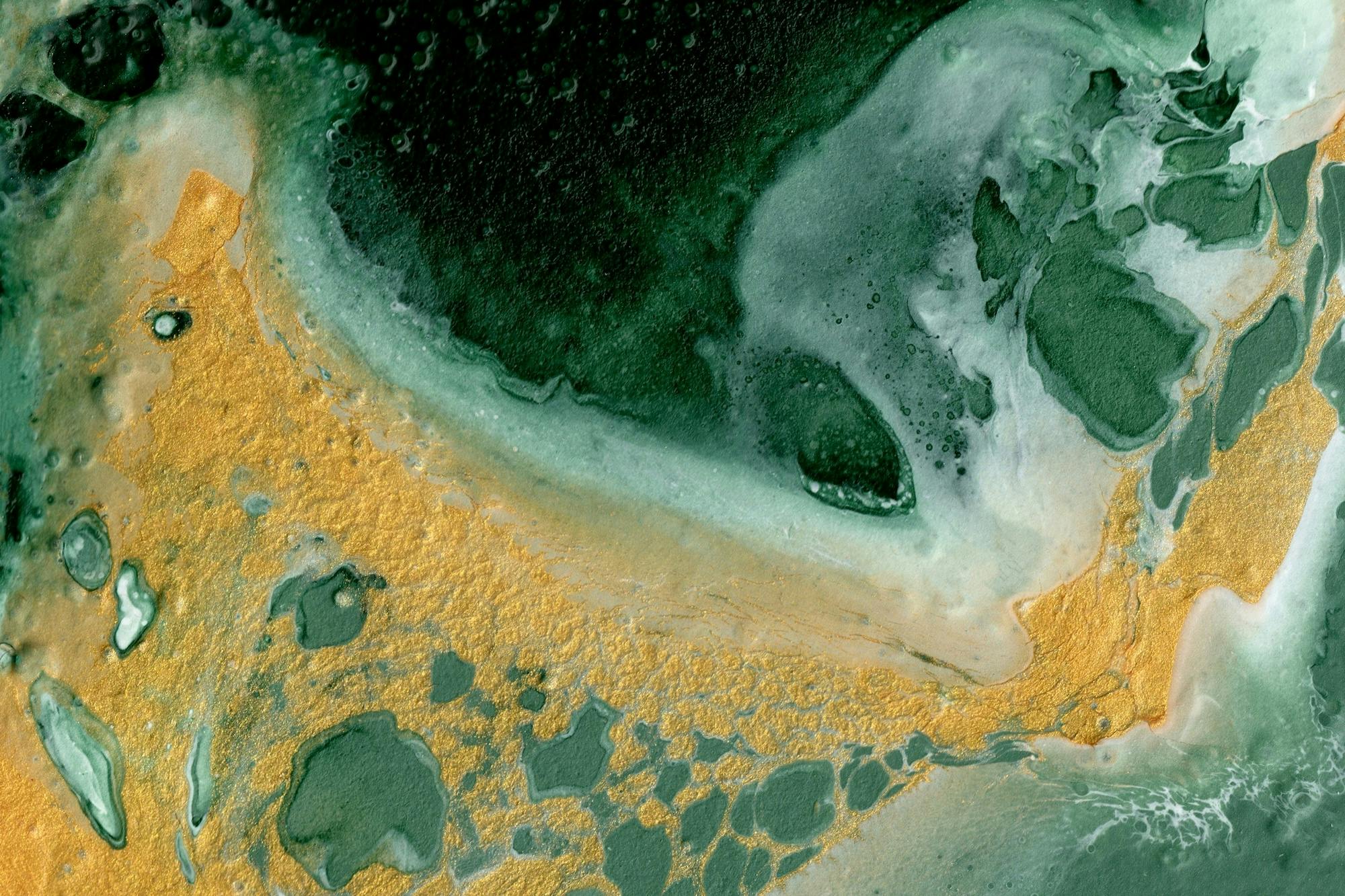
Protocolism: The Evolving Landscape of Art in the Age of AI

In the artistic realm, a groundbreaking movement has quietly been taking shape: one that transcends the boundaries of traditional art practices, by embracing the collaborative spirit of the digital age — thereby blurring the lines between authors and collaborators — and questions the very foundation of copyright law, including the conventional notions of authorship, ownership, and the creative process itself.
This emergent phenomenon — which we call “Protocolism” — represents a paradigm shift in the contemporary art world, challenging the very essence of what it means to create, own, and author artistic works, particularly in an era dominated by generative AI and digital interconnectedness.
Indeed, in the age of generative AI, Protocolism stands as a harbinger of an artistic revolution, one where artists no longer view machines as threats but rather as partners in creation. By inviting artists to refine their styles into protocols, it offers new pathways for artists to co-create with AI-driven systems.
Though not yet widely recognized as an official artistic movement, Protocolism is rapidly gaining momentum within many creative communities. Yet, artists who find themselves drawn to this concept may not even realize they are part of a revolutionary movement, for Protocolism is a term that is still seeking a precise definition.
This article introduces the concept of Protocolism, exploring its defining features and its impact on copyright, as well as its relationship with generative AI and other emerging technologies. The article will also delve into how the Protocolism movement is more than just an artistic movement, but rather a catalyst for changing our current understanding of art, as well as our legal considerations of copyright, ownership and authorship.
Defining Protocolism
Protocolism revolves around the creation of “artistic protocols.” These protocols comprise sets of instructions and constraints meticulously crafted to guide the production of unique artworks. These protocols serve as the bridge between the two pivotal figures: the original artist (i.e. the “protocol artist”) and a diverse array of executors (both human and non-human) who instantiate these protocols into tangible creations that qualify as distinct artistic creations. This symbiotic relationship challenges conventional notions of artistic authorship, as the resulting artworks bear the unmistakable imprint of the protocol artist, along with that of the instantiating actors.
Constitutive Elements
To provide a preliminary definition of Protocolism, we must first delve into the constitutive elements that form the bedrock of an artistic Protocol:
- Protocol as Art: To qualify as art, a Protocol must be recognized as a work of art. This means that it must be claimed by the protocol artist as an artwork, and acknowledged as such by the audience. This lies in the artist’s ability to infuse their unique artistic persona into the very fabric of the protocol. In fact, an artistic protocol isn’t merely a set of mechanical instructions; it’s a canvas where the artist’s essence is imprinted.
- Guidance and Influence: While the artistic Protocol subsists independently of its execution or performance, the Protocol must be intended to guide and influence the creation of unique artworks derived from it. As such, it must be sufficiently precise and distinctive to ensure that all the resulting artworks are unmistakably part of the same “class” and that they all capture the essence of the artist’s aura.
- Creative Discretion: Here’s where Protocolism takes a fascinating turn. While the protocol must carry the artist’s identity, it must also possess a generous dose of ambiguity. This ambiguity allows room for creative discretion of those who execute the protocol, transforming it into a unique work of art. It’s a delicate balance, where the protocol artist provides the pattern, and the executors add the color and life into that pattern.
In essence, Protocolists are the architects, the puppeteers pulling the strings from behind the scenes, guiding the emergence of artworks that embody both their spirit and the spirit of those who bring their protocol to life. This synergy between the protocol artist and the executor is at the core of the Protocolism movement. It heralds a new era where authorship is collective, creativity is collaborative, and the boundaries of art are expanding into new unexplored realms.
In essence, Protocolists are the architects, the puppeteers pulling the strings from behind the scenes, guiding the emergence of artworks that embody both their spirit and the spirit of those who bring their protocol to life.
The protocol artist
Independently of their artistic merits, different typologies of artists are more or less likely to qualify as protocolists, mostly depending on the nature and distinctiveness of their artistic practice.
On the one hand, there are artists whose style is sufficiently strong and remarkable that it can be encapsulated into a protocol without losing its intrinsic connection to the artist. Consider the likes of Jackson Pollock, whose distinctive and chaotic splatter paintings are immediately recognizable as his own. Even if other humans (or machines) attempt to mimic his style, the result would be undeniably Pollock-esque. In this scenario, the protocol becomes a vehicle to perpetuate the artist’s identity and expand their body of work. It establishes a symbiotic relationship between the artist and all those who instantiate the protocol, where the artist’s aura shines through, even in works generated by others. These types of artists are strong candidates to enter the realm of Protocolism.
On the other hand, there are artists whose artistic style is more common or generic. When others attempt to emulate their style, the resulting works tend to be too elusive to be regarded as incorporating the fingerprint of the original artist — because they lack the distinctive, recognizable ‘aura’ that defines an artist’s identity. In some cases, this is actually done on purpose. For instance, many contemporary artists work across media and do not have one distinctive visual or audio style. Their ‘style’ exists as a series of common approaches that ties together disparate works. This can be identified most easily with contemporary artists who play with the idea of generic style in their practice. This makes it impossible for third parties to replicate their ‘work’ by just replicating the physical or digital artifacts stemming from these practices.
In other cases, a collective style emerges of a particular community of artists that support each other and often collaborate with one another. For instance, DADA.nyc is a collective of digital artists that put collaboration and co-creation at the heart of their artistic practices. Every artist contributes to expanding the work of other artists, and because of the creative constraints imposed by the online drawing platform, a common style has emerged from the DADA.nyc community as a collective, which is somewhat stronger than the style of every individual artist that is part of the collective. The protocol, in this context, may not be as effective in preserving the artist’s individuality, because it produces works which are harder to attribute to any specific creator. This makes it more challenging for these individual artists to claim the mantle of a Protocolism, even if the collective might itself be regarded as part of the Protocolism movement.
Protocolism & Music: Similarities and Disparities
The distinction between Protocolism and musical scores lies in the nature of their execution and creative output. Musical scores, in their essence, can indeed be perceived as protocols awaiting interpretation by a performer. Each performer injects their unique style, skillset, and interpretation into the score, resulting in a new and distinct musical work. This aligns with Goodman’s concept of allographic art, where each performance represents a manifestation of the original autographic work, the musical score.
Protocolism, however, sets itself apart by transcending the boundaries of mere performance. When a protocol is executed, it doesn’t replicate an existing work; instead, it generates an entirely new creation. This differentiation is crucial, especially when considering copyright implications. In the context of music (or other performing arts), each performance essentially revisits the same musical work, which falls under the purview of the original composer’s exclusive rights. While performing artists have rights in their performances, these rights are not true intellectual property rights. but rather “neighboring rights” which refer to ancillary activities surrounding an original work rather than to the creation of a new work. They do not, as such, give rise to a new copyrighted work.
In contrast, in the context of Protocolism, every execution of a protocol generates a novel work, potentially eligible for its own copyright protection (provided that it qualifies as an original work with a sufficient degree of creativity). Importantly, the work resulting from this execution does not qualify as a derivative work, since it does not substantially reproduce the ‘expression’ of the original work of authorship that is enshrined in the protocol. This protects all agents instantiating the protocol from any claim of infringement on the copyright of the protocol artist, who does not have a say on the manner in which the protocol will manifest into reality.
While a standard musical score does not qualify as protocolist artwork, this is not to say that musical works cannot, in some cases, embrace the practices of Protocolism. Examples such as John Cage’s thought-provoking “4'33”,” Terry Riley’s “In C,” Steve Reich’s evolving “Piano Phase,” and George Lewis’ “Voyager” system exemplify how musical compositions can transcend the confines of traditional performance and become protocolist works in their own rights.
Similarly, Holly Herndon and Matt Dryhurst’s Holly+ represent a musical work that perfectly embraces the ethos of Protocolim, to the extent that their protocol is not just about the performance of a score, but rather about the generation of new works of music through a particular set of instructions, whose output can be shaped but not foreseen by the original artists.
Protocolism & Generative AI: Friends or Foe?
The emergence of generative AI has sparked a profound debate in the artistic domain. Some artists embrace it as a powerful tool for unleashing their creativity, while others approach it with trepidation, fearing that they will be usurped by the relentless march of algorithms. But what is at the source of this significant divide? What drives fear and what drives excitement towards AI?
For many artists, the fear of generative AI stems from the perception that their artistic career will not withstand the incursion of AI-driven creativity. These are generally artists whose artistic production does not enjoy enough distinctiveness and recognizability to qualify as an artistic protocol. Indeed, the more distinctive one’s style is (and the greater the number of works produced in that style), the easier it will be to train a generative AI model to produce new works in the same style. Yet, as long as the resulting works are sufficiently recognizable to still embody the ‘aura’ of the original artists, they might actually contribute to enhancing the artistic career of these artists, by expanding their body of work and simultaneously increasing their visibility and reach. Those are the artists whose style is not sufficiently distinctive — and who cannot claim authorship over the ‘protocol’ used to produce these works — who ultimately find themselves at risk of being supplanted by the very tools designed to augment their creative processes.
On the flip side, some artists view generative AI as a valuable collaborator, an extension of their creative persona rather than a threat to their artistic identity. The common characteristics of these artists — many of which are protocol artists — is that their artistic production has matured into a sufficiently defined style encapsulating the essence of their creativity. They are not afraid of others replicating their style, because they will always be regarded as the (co-)authors of the resulting works.
Protocolists understand that generative AI operates within the boundaries of a protocol. Indeed, a properly trained and fine-tuned generative model ultimately consists of a set of inferential rules governing artistic creation, allowing machines to mimic and even expand upon a particular artistic style. In this relationship, the protocol artist acts as the orchestrator, crafting the rules and constraints that will guide and inform the production of the generative AI. This collaboration isn’t about relinquishing their creative control; it’s about extending the reach of their artistic vision. This synergy between protocolists and generative AI is a testament to the power of human-machine collaboration. Generative AI doesn’t replace the artist; rather, it amplifies their capacity to create. It is more of a personal assistant, faithfully executing the artist’s vision while contributing to their ever-expanding body of work.
Redefining Copyright in the Age of Mass Production
The digital age enabled the instantaneous reproduction and sharing of ideas and creative content, thereby challenging the underpinnings of intellectual property (see The Work of Art in the Age of Mechanical Reproduction). In the age of generative AI, the problem is not mechanical reproduction but rather mass production. As new creative and artistic content can be produced in the blink of an eye through a combination of humans and machines, the traditional notion of the ‘author’ as a solitary artist toiling in isolation appears increasingly archaic. Copyright law is therefore struggling to adapt to this new world, populated by protocols and generative artworks.
The Elusive Notion of Authorship
In today’s law, the creator of any work of authorship is regarded as the sole author of that work, even when the work is derived from another work. The author of the original work may have a copyright claim over the derivative work, but not an authorship claim. Protocolism embeds the notion of authorship into a much more intricate web of interdependence. Because the protocol in which artists choose to incorporate their style, identity, or essence is an integral part of the art itself, any instantiation of this protocol will represent a new manifestation of the artists’ work. This means that both the protocol artist and the agent instantiating the protocol into a work qualify as co-author of the work, each contributing at varying degrees to the aesthetic output. As artists instantiate the protocol into their own works, they simultaneously expand their own body of work and that of the protocol artist. This is true even if the latter is not even aware of these artworks being created. In fact, different protocol artists may choose to be more or less conditional about how their protocols can be used — e.g. only allowing access to a model in a tightly controlled environment vs releasing a model for free online. These choices are an integral part of the protocol.
This conundrum demonstrates how these new artistic practices no longer fit comfortably within the established framework of copyright law and how the very concept of “authorship” is becoming increasingly ambiguous in an era where protocols increasingly dictate the creation of artworks, and AI-driven systems blur the lines between human and machine creation. Protocolism challenges us to reevaluate how we define authorship, begging us to identify the symbiotic relationship between the protocol artist, who conceives the overarching framework for generating new works, and the multitude of agents (human and non-human) involved in executing these protocols.
Protocolism challenges us to reevaluate how we define authorship, begging us to identify the symbiotic relationship between the protocol artist, who conceives the overarching framework for generating new works, and the multitude of agents (human and non-human) involved in executing these protocols.
The Copyright Conundrum
Traditionally, copyright protection emerges only after a work has been ‘fixated’ (i.e. instantiated) into a medium of expression. Yet, under the paradigm of Protocolism, the core creative endeavor that is enshrined into the artistic protocol subsists regardless of whether it has been instantiated into a work. So what is the copyright status of an artist’s protocol? Can it be protected before being manifested into an artwork? Can it be protected at all, given its purely conceptual form?
The complexity deepens when a work is generated not by the protocol artist, but by other agents following the protocol. Copyright law stipulates that the author of any work of authorship is the creator of that work. However, with Protocolism, even though the protocol artists do not at all participate in the process of instantiating their protocol into a work, they will be recognized as the authors of the protocol, and therefore as the co-authors of any of the resulting works. Things further complexify when several AI models get stacked to produce a final artwork that embodies the ‘aura’ of multiple protocol artists — who are all co-authors of that work.
Finally, so long as the instructions of the protocol are fulfilled, the artist ultimately relinquishes control over the way the protocol will be instantiated by others. This is a departure from copyright law, where the creator wields significant control over the making of derivative works.
More than an Artistic Movement
Protocolism is more than a mere artistic movement. It is a philosophy that emerges at the intersection of technology and creativity, transcending the traditional boundaries of art. In a rapidly changing world driven by technological advancements, Protocolism questions established notions of copyright, as well as the very concepts of authorship and ownership. In particular, Protocolism suggests a different lens through which we can view the creation of cultural artifacts: a world where creativity is a collective endeavor generated through a large web of contributions weaving together a new tapestry of art.
As such, one of the most remarkable aspects of the Protocolism movement is its ability to provoke reflection on the foundations of copyright, originality, and creative ownership. Indeed, Protocolism marks the dawn of a new era where these established legal concepts are no longer adequate. It pushes us to consider alternative models that move beyond scarcity and exclusivity, providing a novel standpoint for understanding contemporary artistic practices imbued with a greater degree of collaboration.
Essentially, Protocolism represents a new “code to live by’’ for both artists and creators living in the age of generative AI.



